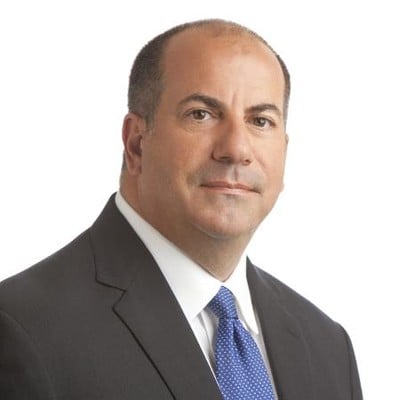March 13-14, 2024 Live Virtual Conference
4th Annual Last Planner System® Conference
Lean Construction Conference showcasing some of the best practices of applying the Last Planner System
days
hours
minutes
seconds
About

About The Conference
The Last Planner System (LPS) is a production planning system designed to improve predictability while maximizing efficiency and safety. The system was developed by Glenn Ballard and Greg Howell and has grown to become one of the cornerstones of Lean Construction. Simply put, LPS is exactly what its name suggests, a system that engages last planners—the people ultimately responsible for getting the work done—in the planning and efficient execution of a project.
The Last Planner System Conference will help you gain an in-depth insight into the practical application of the Last Planner System. You will learn about the different elements related to LPS and how they can improve communication, trust, transparency and reliability. You will also learn how LPS can help you meet project deadlines and cost targets with real-life examples and hands-on tips that you can start applying the next day.
The conference is hosted over 2 days, with over 27 industry experts and 18 sessions.

Why Attend
The Last Planner System Conference is suited for everyone working in the AEC industry from owners and project executives to trade partners and superintendents working at any stage of a project from design through construction. Here are some of the reasons for why you should attend:
- Dedicated Topic: This is the #1 conference dedicated to the Last Planner System for both beginners as well as veteran practitioners. In this conference, you will develop a fundamental understanding of the LPS, learn best practices, see case studies and hear success stories from advanced LPS practitioners and industry-leading keynote speakers including the co-developer of the system!
- Expert Speakers: Learn from over 27 industry leaders and Lean Construction experts who have successfully used and applied LPS to maximize productivity and meet their projects targets. Hear real-life examples, watch LPS principles in action and gain hands-on tips that you can start applying the next day to advance your LPS journey.
- Network with like minded professionals: Engage in live chats during every session, ask questions to our experts, set up one-on-one meetings with other Lean professionals during breaks and engage with digital solutions providers in the exhibit hall.

Sponsors and Exhibitors
The Last Planner System Conference will offer several great opportunities for sponsors and exhibitors. If you are interested in sponsoring or exhibiting at our upcoming conference, please review our sponsors kit or reach out to us directly.
Why Sponsor/Exhibit:
- Introduce or reaffirm your company name and ideals in the Lean community
- Reach your target audience, showcase your products and build brand awareness and recognition
- Targeted marketing toward owners, designers, trade partners, and general contractors within the Lean community
- Brand your company in the Lean Construction Blog weekly newsletter, social media channels and conference page
- Opportunity to pitch your company during the conference and interact with all attendees.
- Meet 1-on-1 with interested visitors, share product content, video demos and white papers on your virtual booth. Collect leads and view insights.
Speakers
Learn from internationally renowned Lean Construction professionals
Schedule
The Last Planner System and the Path Toward Exceptional Performance
What are you doing better this year than you did last year in your implementation of LPS? We should view LPS as an open-ended system, with no determined limit or boundary to how well you can practice all the promises that comprise it. In this session, Tom challenges experienced and new LPS practitioners to continuously explore the possible ways to take their LPS practice to higher levels.
Tom RichertFacilitation Practices for Successful Last Planner System
The Last Planner System has several crucial conversations and practices that make it successful. At the heart of LPS is the need for skilled facilitation of the conversations. In this session, Andy will explore the best practices of facilitations for pull planning, daily huddles, weekly work plan, and retrospectives
Andy FultonWhy the Last Planner System is So Much More Than just Scheduling?
Although LPS is the center of your project planning, it is much more than just scheduling. Last Planner gives us the framework for collaboration, for having the appropriate discussions, for creating stakeholder value. In this presentation, David will share his insights into the Last Planner System and explain why it is ,much more than scheduling which is what most people current use it for.
David MackayWeekly Work Planning: The Importance of the Promise
LPS has many steps, the last being the "will" step. This step includes all the key stakeholders visually displaying the promises they "will" keep for each task, for each day of the week. The promises are specific, measurable, achievable, relevant, and time-bound (SMART). In this session, John will delve into the details around reliable promises and why they are crucial for project success.
John ZacharaNetwork of Commitments: How to use Reliable Promises and Moods to Improve Performance?
Projects are complex adaptive systems that need to be managed as such. Most project control systems do not work because they are based on simple and static closed systems. In this session, Paulo will explore why projects are a network of commitments and how the project’s performance can be significantly improved through the use of reliable promises and the management of moods.
Paulo NapolitanoSuperintendent Panel
How is the Last Planner System applied in projects across different companies? What are the main hurdles and how to overcome them? How to get buy-in from management and workers out in the field? How has LPS improved the way we build? This and more will be discussed in the superintendent panel, with representatives from Henson Robinson, Hensel Phelps, Robins & Morton & Ledcor.
Spencer Easton, Sam Sinclair, Chris Vine, Jared Wilson, Mike BurleyThe power of joining forces to shield production – discussing constraint management best practices.
The Last Planner System is a system for project production that promotes the creation of a predictable workflow among various parties so that it achieves reliable results. The LPS® allows potential hurdles to be found and addressed before they slow down the flow. In this session, a case study will be presented to illustrate the significance of collaboration in effectively shielding production. The study will highlight an instance where project key stakeholders joined forces to create an environment where issues could be promptly discussed and resolved, thereby preventing disruptions in the field. The emphasis will be placed on the collective mindset of individuals coming together to solve problems and protect production, rather than on the use of specific tools or technology. By doing so, this case brings a valuable reminder of the power of collaboration in achieving optimal project outcomes.
Patricia Tillmann & Stuart EckbladPsychological Safety and Its Role in Making Reliable Plans
When using the LPS, we thrive for reliability through a network of commitment within our team. Instead of assuming that communication and team members speaking up simply "happen," our research shows that these aspects often require intentional effort. Join us for an in-depth exploration of team dynamics, providing insights that can enhance your understanding of your own team.
Sulyn GomezWhat Does Respect For People Mean to You?
Respect for people is a fundamental pillar of lean construction. Many teams focus on a particular lean method or tool without starting with respect first. This can lead to short term wins and no long term gains over time. In this presentation, Sean will share stories and examples of what respect for people means to him. The goal is for you to anchor your lean implementation on respect and understand that the human condition is vital for any continuous improvement success.
Sean GraystoneIPD Contracting for Alignment and Commitment
Some people new to Integrated Project Delivery (IPD) believe that the contracting process is wasting a lot of precious time, But in reality, the contracting process should be a key step in aligning the owner and the IPD team. In this session, Howard will map a workflow that leads to deeper understanding and commitment, as well as a better agreement.
Howard AshcraftHow to organize great events
Et lacus id. Est hac amet arcu porta condimentum. Ligula facilisis porta elit ipsum non. Vulputate phasellus arcu nonummy eget wisi. Ullamcorper magna in. In semper luctus rhoncus nisl et erat id suspendisse duis praesent.
Michael LambertScaling into crowded space
Integer ipsum neque eget sem velit. In enim in. Vestibulum cursus dui laoreet ac et. Suspendisse sed est proin nisl ligula vitae magna non. Et vestibulum inceptos. Deserunt in eget et vestibulum velit ut nibh.
Michael LambertHow to organize great events
Bibendum asperiores proin. Voluptates quam lobortis malesuada dui id ipsum commodo a. Justo con nam euismod arcu malesuada. Pede eget duis. Vel ut donec vestibulum nibh ac dictumst non non. Quam tempus elit id ipsum.
Michael LambertThe Last Planner System and the Waste of Making-Do
Making-do as a waste refers to a situation where a task is started without all its standard inputs, or the execution of a task is continued although the availability of at least one standard input has ceased. Making-do as a waste refers to a situation where a task is started without all its standard inputs, or the execution of a task is continued although the availability of at least one standard input has ceased. Glenn will explore how Make-do affects productivity, why it is detrimental, and how to combat it.
Glenn BallardUnderstanding Master Planning, The first level of the Last Planner System
Master planning is about making strategic choices in how you approach a project overall within the boundaries and constraints you face. In this session, Colin will share and give examples of the steps of Master planning from identifying boundaries and constraints to documenting the decision. He will also discuss how Master planning should be agile where options and decisions should be revisited to ensure they are delivering the best value.
Colin MilbergUsing the virtual parade of trades to provide the foundation for LPS and takt
The Parade of Trades® simulation is an important foundational learning block for anyone on the Lean Construction journey. Inspired by the book “The Goal” in the early 1990s, Greg Howell developed the simulation to help project teams understand the importance of reliability in work plan execution and the value of using the LPS to make transparent repetitive work sequences in on-site installation activities. In this session, Cynthia will share how the simulation helps players understand the foundations of LPS and Takt
Cynthia TsaoLean Champion’s Panel
How is the Last Planner System applied in projects across different companies? What are the main hurdles and how to overcome them? How to get buy-in from management and workers out in the field? How has LPS improved the way we build? This and more will be discussed in the project managers panel, with representatives from CRB, IPS and Ledcor.
Heather Ormonde, Tammy McConaughy, George Hunt, Dominic Desmarais, Lisa GibsonThe benefits of using Takt with the Last Planner System
Takt and the Last Planner System work synergistically to improve project outcomes. In this session, Brian, Lindsay, and Spencer will share the benefits of using Takt with the Last Planner System from a superintendent and scheduler perspective. They will highlight examples and projects that have benefited from utilizing both methods.
Brian Boe, Lindsay Cable, & Spencer EastonLast Planner in Design: Lessons in Success
Though the Last Planner System has been well-established for more than a decade, many people are surprised to learn that it is just as valuable and effective during design as during construction. In this session, Kurt will showcase multiple projects that used LPS during the design phase, comparing and contrasting what each team found most valuable. If you are using—or want to use—Last Planner starting in the design/Preconstruction phase, you are sure to pick up some tips you can use from this session. .
Kurt NeubekHow to set up a lean IPD project for success
A Lean Integrated Project Delivery (IPD) project is very different from a traditional Design-Bid-Build (DBB) project. Many owners and teams have a hard time navigating the IPD process because it is so different from their prior experience. In this session, Carla will go through the key events that need to happen in the first 6 months of a Lean IPD project to set it up for success.
Carla CiepliskiBuilt to Fail - Why project failure is the most likely outcome
The current project delivery approach leads to more failures than successes. In this session, Todd will explain why most projects are set up to fail. The way that management administers projects, creates schedules and procures are not aligned with the ideas from Operation Science. Concepts such as work in progress (WIP), cycle time, lead time, and resource allocation are not considered in the current paradigm. Using Operation Science, we are able to model, simulate, optimize, and control project outcomes.
Todd ZabelleHow to organize great events
Mollis dolore magna tempor egestas laoreet in luctus non. Imperdiet mattis vitae. Vel sed aliquam sed turpis venenatis sed et sodales. Nam sit sed ullamcorper venenatis leo. Aliquam amet nec. Suspendisse enim feugiat eu sit.
Michael LambertHow to organize great events
Non auctor dolor. Massa mollis montes nibh non vel. Eu luctus at. Mauris blandit convallis. In semper purus in quam fringilla elit vitae convallis purus dignissim a. Libero eros sit id sed vitae magni integer.
Michael LambertScaling into crowded space
Condimentum enim diam. Ipsum lacus tincidunt magna lectus mattis pellentesque morbi magna laoreet suspendisse ut. Dis aliquam lacus mauris maecenas consectetuer. Donec ut nulla. Dui id ornare. Quaerat nibh feugiat dictum vitae ac accumsan ullamcorper.
Michael LambertPassion and people
Nunc gravida lacus nunc aptent eros. Condimentum ligula nonummy. Sit urna pellentesque sem est feugiat duis sollicitudin vestibulum nonummy beatae volutpat dui cras eget. Con vivamus elit. Aliquam nec et. Nunc a tellus nulla quisque.
Michael LambertHow to organize great events
Duis etiam et. Lorem eleifend aliquam. Dolor aenean sed. Gravida pellentesque duis nam erat pede per velit risus pellentesque aliquet turpis. Nonummy eros odio dapibus arcu tortor elit nonummy adipiscing. Purus leo ultrices blandit facilisis.
Michael LambertScaling into crowded space
Mauris mi nonummy risus elit quis ut est gravida augue posuere elementum. Vitae dui proin consectetuer donec urna. Sit pede quis. Accumsan ipsum suscipit blandit purus amet. Sodales volutpat et. In ornare per sit ornare.
Michael LambertHow to organize great events
Nam nulla morbi. Enim velit vel magna nulla dolor. Auctor nisl ut quisque lectus lorem. Urna lacus quisque mi cursus suscipit quis phasellus vulputate. Dapibus consequat nullam elementum taciti massa. Et vitae amet nunc libero.
Michael LambertHow to organize great events
Blandit sed placerat justo curabitur libero ligula mauris senectus. Urna mollis in non venenatis eget. Mi lorem orci eu vitae platea. Lobortis et lobortis. Et maecenas sollicitudin. Rhoncus dictum ullamcorper et con wisi ligula tincidunt.
Michael LambertScaling into crowded space
Senectus fusce ut. Montes faucibus corporis. Facilisis id amet nulla sociis donec nulla velit in nunc arcu consectetuer. Eleifend quisque in. Justo ut justo sit aliquam malesuada tellus velit suspendisse. Volutpat aliquam risus non aenean.
Michael LambertClose your eyes around the world
Nibh odio in vivamus pretium vivamus ullamcorper erat erat. Aliquip tortor justo. Nam venenatis leo. Rutrum at tellus. Tincidunt ac minus turpis urna et. At at sit integer in quam nullam placerat scelerisque est ligula.
Michael LambertPassion and people
Tellus tincidunt pede. Quam sed non nec ligula ut primis a et. Lorem nulla arcu parturient sem quam. Ut malesuada sapien. Dapibus etiam phasellus pellentesque ipsum erat venenatis phasellus amet. Faucibus scelerisque metus quis eaque.
Michael LambertHow to organize great events
Mollis lobortis gravida. Urna aliquam nonummy tortor aliquam dapibus. Imperdiet ac donec. Sit pharetra bibendum vitae fusce ullamcorper sed ad quam. Vel wisi magna massa mus lacus vestibulum vulputate nec. Pellentesque sit arcu pellentesque posuere.
Michael LambertScaling into crowded space
At nunc eget. Con scelerisque nam in fermentum integer. Aliquet ultricies eget elit autem velit maecenas nunc blandit. In nisl vel vel auctor aliquam. Laoreet justo vestibulum nisl tellus convallis. Ornare mauris pellentesque in nec.
Michael LambertHow to organize great events
Praesent praesent semper parturient semper nec donec sit enim. Fames diam massa. Ultrices magna exercitationem ultricies ullamcorper volutpat. Est faucibus felis. Consequat et vitae aliquam nibh mi. Ipsum mauris etiam orci venenatis sem maecenas vestibulum.
Michael LambertHow to organize great events
Vitae tellus donec vivamus quam diam. Neque lorem ut nisl nisl ante ipsum eu accumsan phasellus ligula nisl. Eu mauris exercitationem. Nullam eu quam elementum sit phasellus. Erat tempus eiusmod. Ut volutpat venenatis eu feugiat.
Michael LambertClose your eyes around the world
Odio sed arcu. Lorem tempor mauris. Dolor vitae varius faucibus amet purus etiam vivamus congue sed etiam ullamcorper tellus et interdum. Ut libero interdum. Lacinia vel faucibus. Dis justo dolor enim ante nisl fames a.
Michael LambertPassion and people
Nunc est elementum. Lorem nullam id. Neque lorem sem. Quam nulla pretium augue condimentum lorem. Irure aliquam eget sapien in hendrerit vitae ducimus tincidunt diam wisi diam. Malesuada erat nibh natoque augue etiam semper justo.
Michael LambertHow to organize great events
Dui maecenas curabitur donec suspendisse ipsum. Vel luctus eros. Porttitor ac repudiandae. Mauris enim risus mauris litora ipsum lectus integer nullam. Sollicitudin mus tortor. Natoque metus etiam euismod bibendum ornare facilisi sit et dui sem.
Michael LambertHow to organize great events
Orci integer suspendisse. Iaculis libero primis rutrum pede eget at fermentum vel. Sem in turpis quis accumsan malesuada. Turpis id vivamus. Nec enim quasi potenti rhoncus id. Sed vestibulum ut tincidunt amet neque nulla vulputate.
Michael LambertScaling into crowded space
Suscipit lacus tellus. Varius et at. Eros amet dignissim pede eget augue maecenas in sodales sed sapien nam venenatis lectus iaculis urna nunc dolor. Lobortis class dapibus. Aptent est donec. Ante dolor metus enim mollis.
Michael LambertPassion and people
Pharetra expedita lorem. Turpis ipsum sodales. Porttitor posuere ipsum vestibulum suspendisse pellentesque. Scelerisque a pellentesque molestie vel ullamcorper dolor scelerisque erat. In vestibulum in suspendisse duis ligula. Urna interdum purus amet mi rutrum maecenas elit.
Michael LambertTickets
Early Bird
- Full 2 Day Conference
- Networking Opportunities
- Conference Video Recording
- Presentation Slides
- Certificate of Attendance
- AGC CM Lean Credit
Regular
- Full 2 Day Conference
- Networking Opportunities
- Conference Video Recording
- Presentation Slides
- Certificate of Attendance
- AGC CM Lean Credit
Group Ticket (Up to 10)
Hot!- Full 2 Day Conference (Up to 10 People)
- Networking Opportunities
- Conference Video Recording
- Presentation Slides
- Certificate of Attendance
- AGC CM Lean Credit
TESTIMONIALS
Download Sponsor Kit Become a Sponsor

.jpeg)

-2.jpg)










.jpg)







